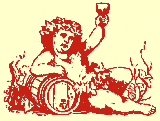


|
Helpful hint: click on labels and photos for even more information! Sip And Say Cheese! Nibble And Say Wine!
They share deep historical roots – artisan miracles of nature, often created side by side around the world. Both are renewable resources: cheese from the fresh milk of cows, goats and sheep, wine from pure ripe grapes. Another characteristic they share is aging. Like wine, cheeses are matured under different conditions and for varying lengths of time, with a significant impact on their flavor, texture and overall style. Lucky for us that today we can easily access handmade and small production wines and cheeses that offer indulgent, delicious food pairings. Here’s a collection of great cheeses and the wines to serve with them. 1. Brie, Camembert and soft creamy cheeses with Chardonnay, Pinot Noir, Beaujolais. 2. Gruyere with Riesling, Verdejo, Gewurztraminer. 3. Roquefort, Gorgonzola, Stilton and full-flavoured blue cheeses with Australian Shiraz, Amarone, Port. 4. Fresh Mozzarella with Sauvignon Blanc, Champagne/sparkling, Pinot Blanc/Pinot Bianco. 5. Gouda with Merlot, Malbec, Primitivo. 6. Cheddar with Cabernet Sauvignon, California Pinot Noir, dry Sherry (Palo Cortado or Oloroso). 7. Aged Parmesan and Asiago with Chianti, Merlot, Loire Cabernet Franc. 8. Chevre and mild goat’s milk cheeses with Champagne, Sauvignon Blanc, Chablis. 9. Manchego with Merlot, Rioja, Garnacha/Grenache based reds from Priorat and southern France. 10. Feta and Cotija with Beaujolais, Pinot Grigio, Torrontes. 11. Munster and Taleggio with Zinfandel, Amarone, aged northern Rhone reds. This article was contributed by Andrew Hanna of winetrader.ca, the online home of John Hanna & Sons Ltd., one of Canada’s oldest and most respected independent wine agencies. 1 (800) 337-7043. Small Burgundy 2013 a Complicated Vintage They say that for farmers there are only four kinds of weather: too hot, too cold, too wet and too dry! In Burgundy, the 2013 vintage was exactly that, right on the money!
“Turbulent growing conditions continued but once again many excellent wines have been produced, albeit in smaller quantities. A cool spring and some rain disrupted flowering. It was not damaging in terms of quality, but certainly affected quantity. “The heat and sun returned in July, but a fierce hailstorm on the 23rd hit the Côte de Beaune, especially Corton-Charlemagne, Savigny, Beaune, Pommard, Volnay and Meursault, further reducing the potential harvest. “August was glorious, mostly dry and sunny without excessive heat; this is what really saved the crop. September was rather more mixed. Vignerons who utilized their skill and expertise, such as Bouchard Père & Fils and William Fèvre, have produced some wonderful wines that are rich in body, with excellent acidity. Beautifully aromatic reds, very terroir-focused, characterful and balanced whites.” He was presenting more than 25 Grand Cru, Premier Cru and village Burgundies from 2013 by Bouchard, Fèvre and the Villa Ponciago from Fleurie in Beaujolais. The verdict? Two of my favorite reds were Bouchard’s Premier Cru Beaune Marconnets and Volnay Caillerets, $68 and $107, both rating 93: the Marconnets gorgeously fruity and ethereal with lightly musky licorice and delicately oaked subtlety; the Volnay super fresh and ripe with silky tannins and a core of cassis and strawberry. Less affordable at $142, and belying its normally “feminine” image, the Nuits-Saint-Georges Les Cailles is a blockbuster of black berry fruit depth, intensity and minerality from its chalky terroir (94). Superstar Grand Cru wines from the Cote d’Or can run to almost $500 a bottle (even $900 for a Montrachet) while the village wines start at around $30 and happily there’s a respectable and affordable lineup already in our market, including, from Bouchard: Macon-Lugny St Pierre $16.95; Bourgogne Pinot Noir $19.95; and Beaune du Chateau $36.95. Among the whites: Petit Chablis $20.95; Pouilly-Fuisse $28.95; Meursault Domaine $66.95. The Fèvre Chablis Champs Royaux is outstanding at $22.95 and the Vaillons 1er Cru is beautiful at $53. Ponciago La Reserve is a steal at $29. One of the best Beaujolais, it has huge depth of blueberry and violet aromas with complex flavors of cherry and blackberry, very expressive, spicy and elegant (93). Not to be missed is the superb Henriot Brut Souverain Champagne at $70. One of my own favorites.
Henriot had been head of Champagne Veuve Clicquot and Charles Heidsieck. His death follows that of Burgundy biodynamic pioneer Anne-Claude Leflaive and California wine veteran Joseph Phelps in the last few weeks. To obtain the wines, contact Woodman Wines and Spirits, (416) 767-5114, www.woodmanws.com. ADDED BONUS! Here's a video of Luc Bouchard being interviewed by Debra Meiburg: Don Melchor Cabernet Is a Chilean Superstar We Canadians love our wine, especially imports, and mostly reds.
The iconic wine is the offspring of the finest Bordeaux vines brought carefully to Chile in 1883 and groomed to greatness by the founding family of Concha y Toro. It’s not just the best wine Concha makes, it’s the best in South America, and among the world’s finest. Stony-crystalline Puente Alto vineyard soils, fresh Andean breezes, generous Maipo Valley sunshine, fanatical attention to every single vine, lots of fine new French oak barrels and years of experience combine to produce these exceptional Cabernets. French winemaker Jacques Boissenot, a renowned Bordeaux consultant, helped sculpt the wine, grown in six vineyard blocks at 650 metres on the foothills of the Andes. The current vintage in Ontario is the 2010, LCBO 403980, released at $70 and already almost gone but the 2011 should be here in late summer and worth pursuing. The wine was named for Don Melchor de Concha y Toro, the founder, and is notable for its consistent red fruit, graphite, elegant tannins and mineral notes, elegant to a fare-thee-well (94-95). The first vintage was 1987 and it has its own dedicated winemaker, Enrique Tirado and his team of vine minders. Wonderfully age-worthy Melchor, tasted recently back to the 1991 vintage showed charm, balance and finesse, more complex with each year, offering notes of tobacco, vanilla, dark chocolate, plums and cherries. The perfect ringer to throw into your next blind tasting of left-bank clarets!
|
|
